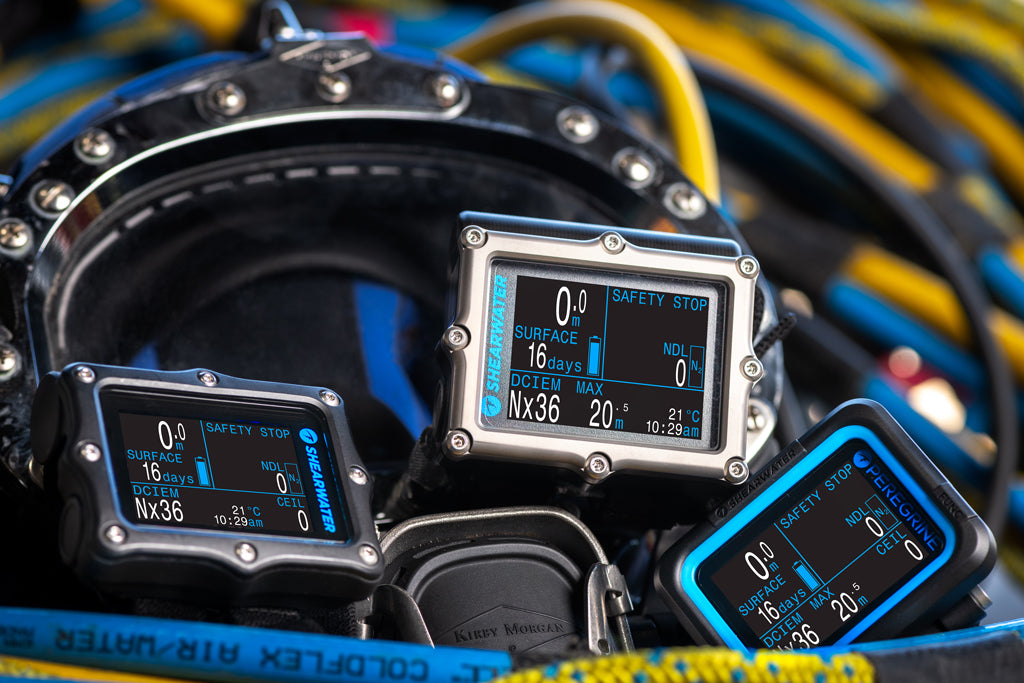DCIEM for Commercial Diving
Tested by Defence Research and Development Canada
Tested with thousands of dives and doppler monitored manned dives
Download to a compatible Shearwater dive computer
Buy an unlock code to use the DCIEM algorithm on existing Shearwater computers
OR
DCIEM can be pre-installed on new Shearwater computers for special orders
Contact the factory to purchase new Shearwater computers with DCIEM firmware pre-installed
Simple layout and powerful features
Enjoy the features and intuitive layout of the Shearwater ecosystem, all while using the DCIEM algorithm
COMMERCIAL DIVING
Shearwater’s DCIEM algorithm implementation is suitable for commercial divers where regulations allow. You must always follow local diving guidelines and their rules for using dive computers. Shearwater has worked closely with the Royal Canadian Navy to ensure our DCIEM algorithm implementation is true to their model. Shearwater’s DCIEM implementation does not produce repetitive groups or repetitive factors, instead the DCIEM algorithm constantly tracks the diver’s tissue compartments even between dives. There are many advantages to using a dive computer over tables, including:
Increased dive time on multi-level dives and repetitive dives
- Flexibility during decompression stops
- Automatic electronic dive logging
- Built in dive planning
Features
Use the Shearwater DCIEM diving algorithm, based on the Kidd/Stubbs serial decompression model developed by the Defence and Civil Institute of Environmental Medicine (DCIEM).
- The DCIEM model has been tested by the Defence and Civil Institute of Environmental Medicine with thousands of Doppler evaluated dives assessing bubble formation.
- DCIEM is available on the Peregrine, Perdix 2, Nerd 2 and Petrel 3 in single gas Air and Nitrox modes only.
- Access the Buhlmann algorithm and the DCIEM algorithm on the same dive computer.
- Switch between diving algorithms while on the surface.
Acknowledgements
Shearwater has worked closely with the Royal Canadian Navy to ensure our DCIEM algorithm implementation is true to their model. We would like to give credit and thanks to the Royal Canadian Navy for their work on developing the DCIEM decompression model but note that they are not responsible for our implementation of the algorithm.

